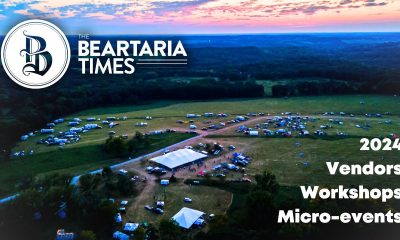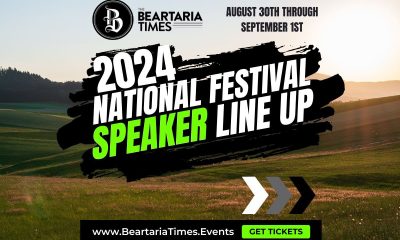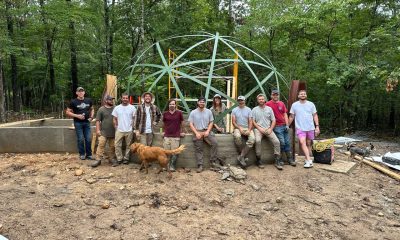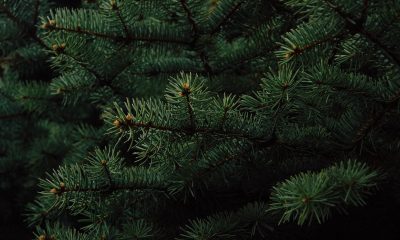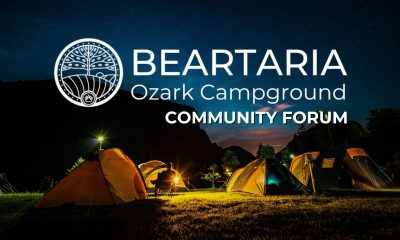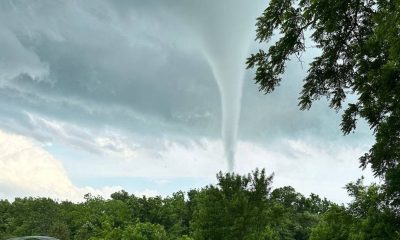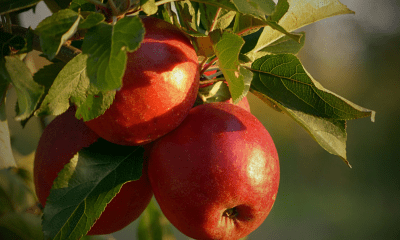Business
What Time is it? SLIME TIME!
“I want to start my own business. I want to start a slime shop. I’ve wanted to do that for years!”
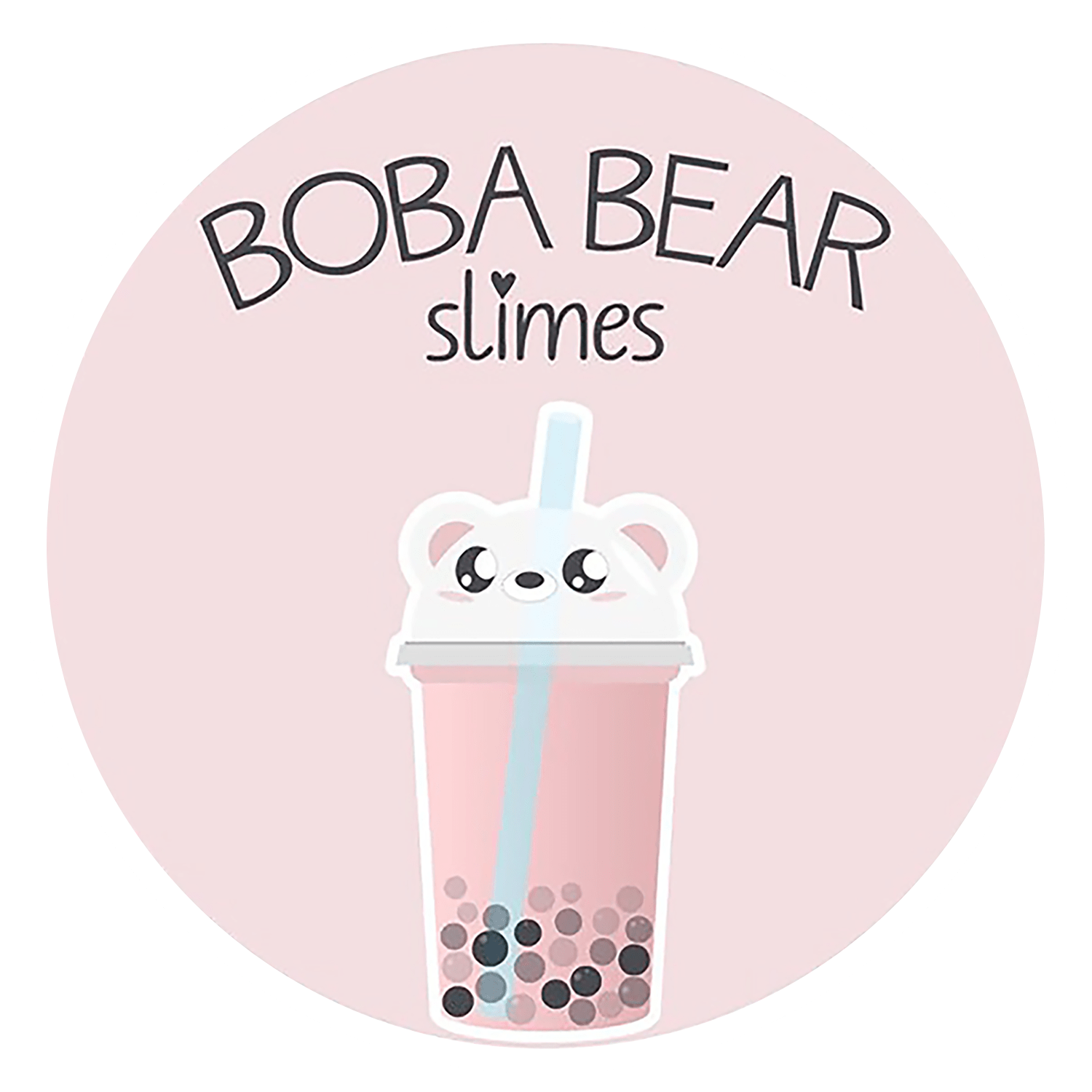
By: Winki Bear

Ever since our daughter was two years old, she has always had the desire to please people. She wanted to start a home restaurant where she could create her own menu. When people would get their bill, she wanted it to say “FREE .”Through the years of her childhood, we have taught her the value and importance of hospitality and giving and how that can meld together with the value of her time and skills. Teaching her what costs and benefits mean through her weekly allowance for doing her chores and coaching her through the spending and saving process was an important step for her to realize that her hard work of cleaning the house every week will end up as a good or service of her choice if she desires it. Once that concept sank in, she was ready for the next step.
Since the beginning of her educational path, Norah has always been homeschooled. However, when we moved to Missouri in December of 2021, we were now out of the city, away from family and away from tons of distractions. As we got settled, since we don’t live on a farm or have a huge plot of land to work yet, like many bears here in Missouri do, my husband and I realized she had a lot more time on her hands. So, we decided one day to sit down with her and have a loving conversation.
“Ok, Love, we have some options for you to think about. You have a lot more time available outside of your schooling now, and we want you to choose how you are going to fill that time. You can either pick a school subject, an extra-curricular activity you would like to expand upon, or start your own business.”
It did not take her long to choose. “I want to start my own business. I want to start a slime shop. I’ve wanted to do that for years!” “Perfect!” We were excited to start this adventure with her but wanted to do it in the right way so she would get the best education out of this experience and have a lot of fun.

The first thing we did was discuss with her what her brand wanted to be and what her shop was going to be called. “Products are so fun to make, but the brand and image of your shop are what sells your product.” This took time and a lot of rough drafts. We had her draw out a few logos and play with quite a few names. She finally settled on Boba Bear Slimes. She chose that because she loves boba tea, she is a bear, and the last part is obvious. We sent her rough draft logo to Bytesize Bear, who is a master at digital art, and she created what is now Norah’s logo for Boba Bear Slimes. The next thing was for her to start a slime journal. She needed to create an outline for her business. What products would she need? Where would she find these products, and how much will they cost? What will her packaging and shipping of the products look like, and what would she need for that? How is she going to label her products? Being supportive through this process was key, as she was only nine years old when she started this adventure. We incorporated all of these tasks with her homeschooling curriculum, so it wasn’t overwhelming. Once she had this outlined, she then moved on to writing down the slimes she wanted to create. Norah keeps a log of every slime with the name, the type of texture it is, the scent, the color, and the add-in that comes with it. Then comes the fun part, making the slime.
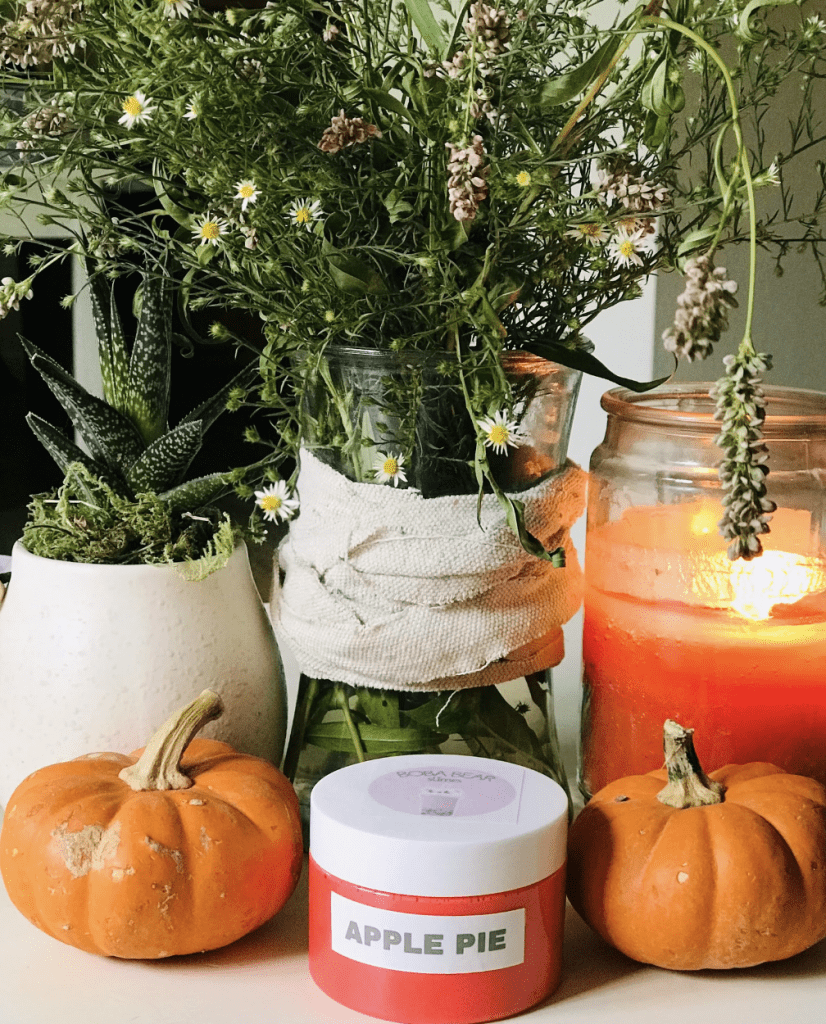
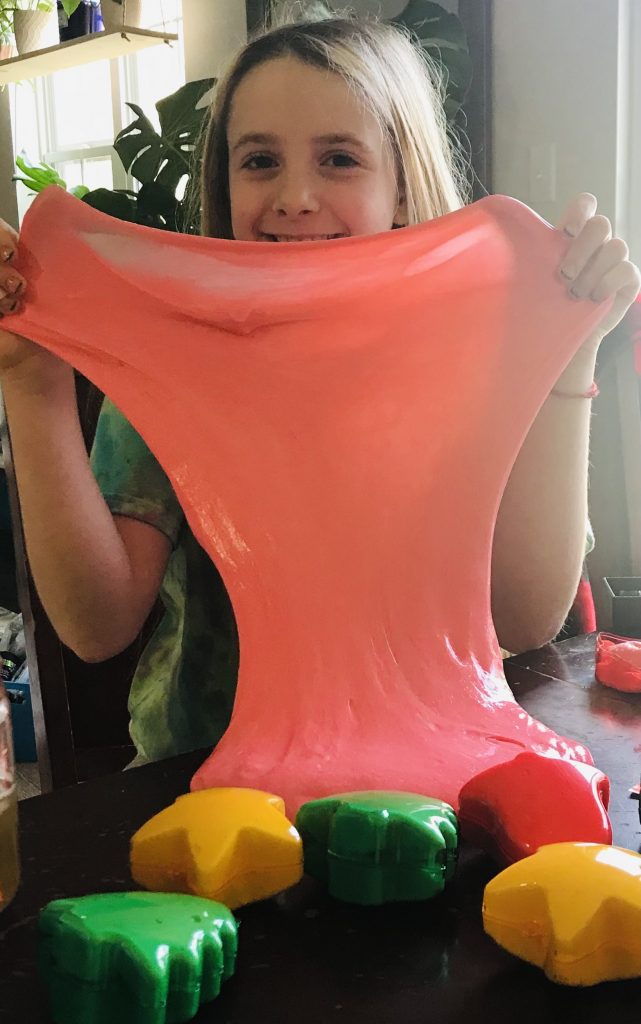
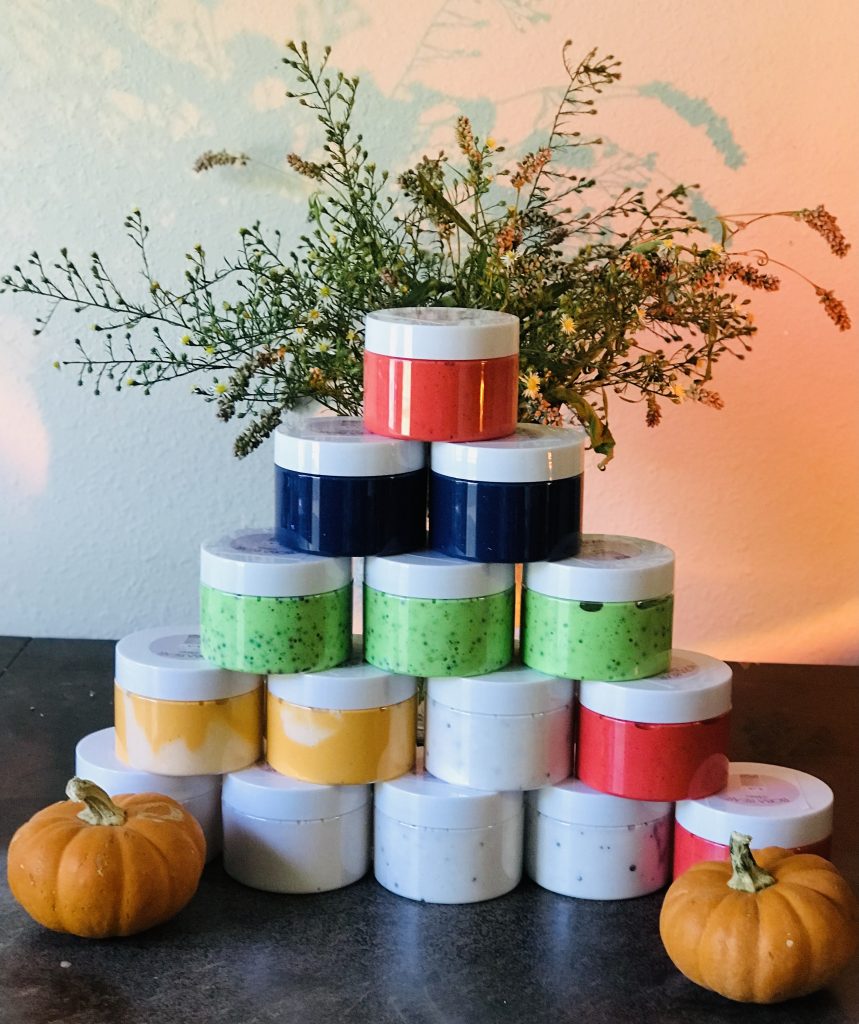
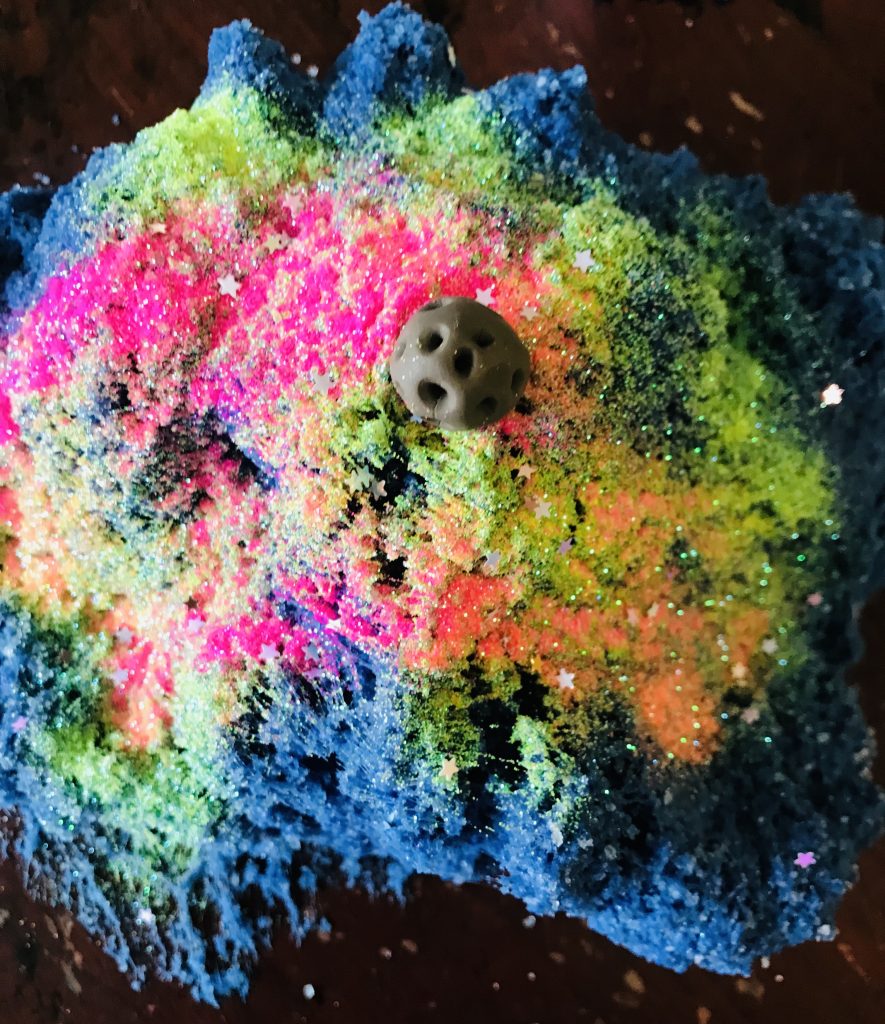

It didn’t take too long to acquire all the essentials for creating her little individual masterpieces of art. Once she had everything, she started bringing her hard-outlined work into reality. Mixing glue, dye, scents, glitter, and the like in big batches was just the beginning. Putting the semi-sticky and wet textured slime into jars and giving them name labels, scent information, and in some cases, price tags along with the most important, the Boba Bear Slime logo, is just as long of a process as making the gloppy toy itself. It takes Norah about three days to create a batch of 24 slime jars. She also attaches a complimentary bag of ‘Activator’ with instructions just in case the slime gets too sticky, which happens over time. With every slime she sells, she also gives a sweet treat which is her way of saying “Thank You” for supporting her shop.
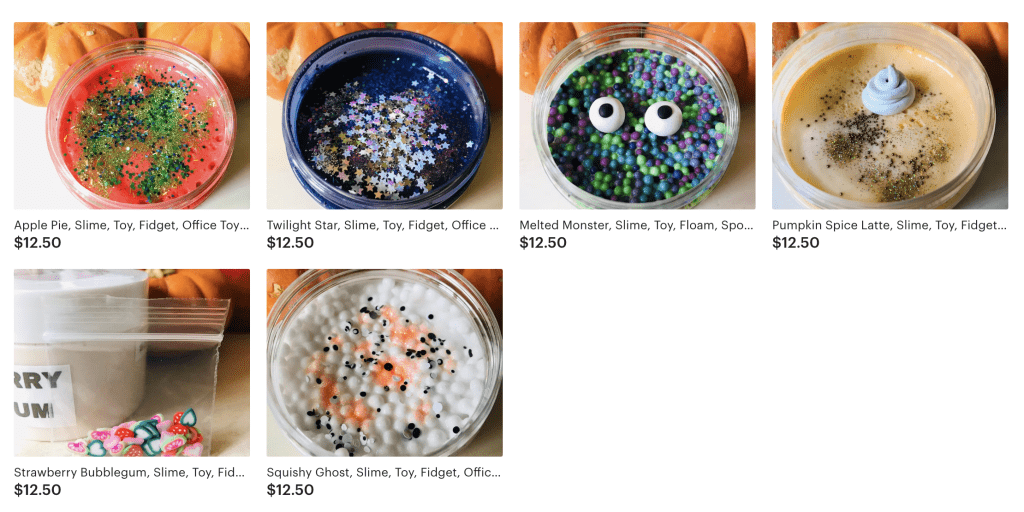
Boba Bear Slimes was first created in July of 2021 and was first introduced to the realm at The First National Beartaria Times Festival right here in Missouri. Since then, she now sells her products in a local downtown boutique here in Lebanon, Missouri, called Crazy Daisy Boutique. She has her own Etsy shop and has attended two craft fairs which she has almost sold out of her slimes every time. Norah has learned the value of hard work and organization and how much it pays to stay focused and persistent, and consistent. Her advice to anyone who wants to start their own business: “It’s not as easy as you would think. Do a lot of research. Don’t just jump right into it. It’s not going to be as easy as watching a YouTube video. They had to plan things and make rough drafts and create logos and figure out financial details. If you follow your passion, it will always lead to success.”
You can find her products on Etsy, the Beartaria Times app by contacting Norah @Bright Light Bear, or locally in the Crazy Daisy Boutique in Lebanon, Missouri.
Business
3000 Members In Our Business Group!: This Week On Our Community App!
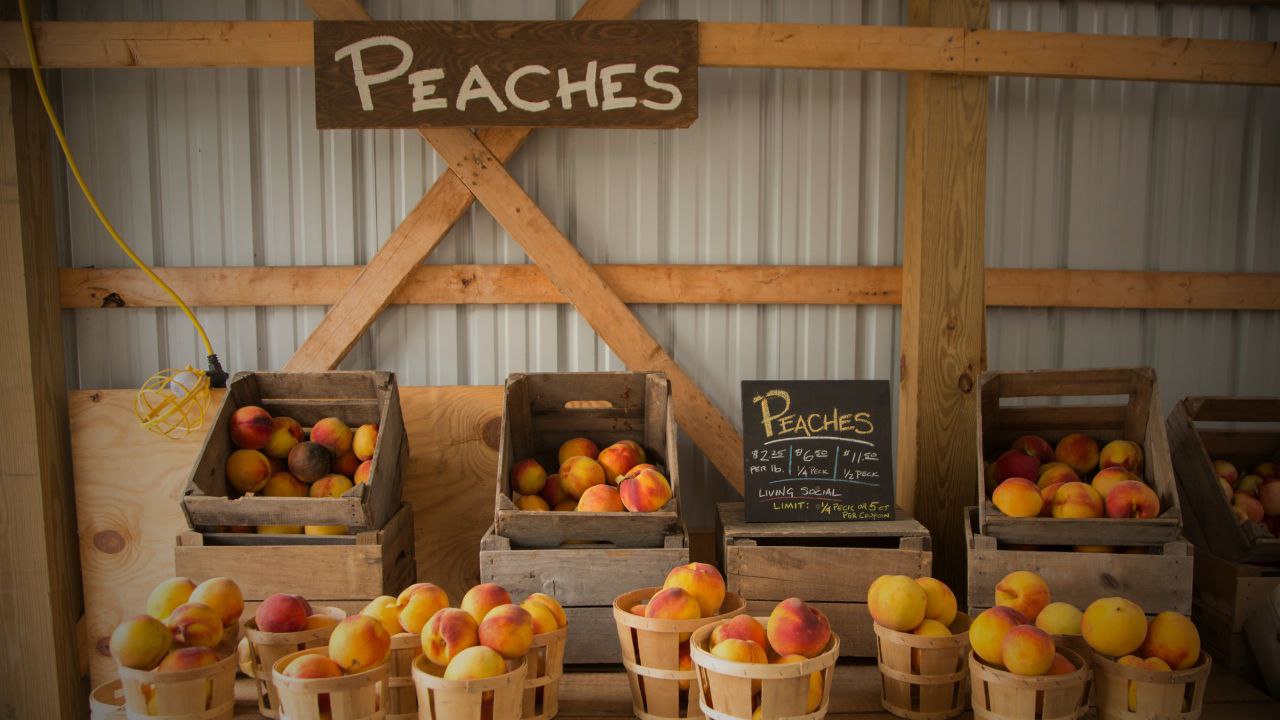
Our thriving business group hosts 3,000 members, from small solo entrepreneurs to developed companies. This week, we aim to give more exposure and introductions to the businesses of Beartaria.
We encourage the businesses of Beartaria to introduce themselves and what they do in the business group and the local state groups. We invite our community to jump into these groups to see what is going on!
This can help the wider community know that you are on the app and what you do.
As a community app that doesn’t do paid ads, lots of generic posts that just advertise your business can be a little bland.
Let’s add some value to it, here are some ideas that can help make a good introduction:
- What do you do?
- How did you get started?
- Where are you located?
- Why do you love what you do?
- What are your goals?
- How has Beartaria helped your business, whether directly or through the integration of values and practices?
- Do you have any big lessons learned through your experience that could help others?
- Let’s see some pictures or videos of your work!
We look forward to seeing all the great businesses and professionals at work in Beartaria!
Sincerely,
The Beartaria Times
If you are interested in joining our community app, you can try it out with a 7 day free trial at App.BeartariaTimes.com
Business
Former NASA Mechanic Secured To Design Classical Learner’s Elementary STEM Program
“Skills create opportunities, and we can use those skills to guide our children to become young entrepreneurs and create opportunities for themselves.”

We have received word from Brett Pike at classicallearner.com that former NASA mechanic and industrial engineer Mark Thaxton has been secured to design Classical Learner’s homeschool elementary STEM program.
Mark has vast experience as a helicopter mechanic in the Marines, a wind tunnel mechanic at NASA, and currently an industrial engineer in the truck industry.
This is big news for the growing homeschool curriculum and social network.
While Brett’s expertise in American history and entrepreneurial education has launched Classical Learner and Homeschools Connected to success, the new STEM program is set to take Classical Learner to a new level of in-depth science, technology, engineering, and math studies.
Brett told a reporter at Beartaria Times,
“We as parents can teach our children real skills for the real world from a very young age. Skills create opportunities, and we can use those skills to guide our children to become young entrepreneurs and create opportunities for themselves.”
Brett Pike
Engineer Mark Thaxton added,
“I aim to help the youth truly understand the most basic fundamental concepts used in making and designing all we do and see.
We can erase the stigma that engineering language and concepts are too abstract for anyone to learn and understand.
I want to eliminate the “magic” behind the way things work and give that “magic” names, logic, and ways to use them throughout life.
The ultimate goal of these lessons is to use basic fundamental concepts as the base of your learning castle. I sincerely hope that when learning something new and complicated in the future, our students will be able to draw a parallel to these courses, which will aid in understanding those future concepts.”
Congratulations Brett and Mark!
We are excited to see this develop and the response from Classical Learner’s growing community of homeschoolers.
@ClassicalLearner on The Beartaria Times to connect with Brett.
@Thaxton Bear on The Beartaria Times App to connect with Mark.
For a three-day free trial and to support Beartaria Times, you can sign up to Classical Learner’s Homeschools Connected platform with an affiliate link,
ClassicalLearner.com/Beartaria
Business
One Man’s Trash…
The smooth, soft feel of the flats and curves. The smell of the copper oxide on my skin and the sound of the various pieces as they fell into one another. It all intrigued me and seemed to intensify as time passed.

By: MrWhitBear
As a lifelong copperhead, I found myself wondering what I was going to do with this industrial storage tote filled to the brim with all things copper. It was a treasure trove collected from years of being a commercial plumber. From the early years of re-plumbing our family’s laundromat business with my Pop to the water conditioning business, we started together that failed. That tote had been many a mile on more adventures than anyone of us could account for. After that final attempt, we closed that tote up and packed it away.
I would open it from time to time to get something or drop something in and reminisce over pieces that brought me back to that moment and place. The jobs my wife and I worked together to make ends meet; So many pieces and parts in various states of patina.
The smooth, soft feel of the flats and curves. The smell of the copper oxide on my skin to the sound of the various pieces as they fell into one another. It all intrigued me and seemed to intensify as time passed.
We had always intended to just take it to the recycling center, and albeit nearly did when things got really lean in the last few years, (that’s another story.)
But God in his mercies had another plan
Those rosey-colored bits of beauty were called out of that dusty old tote into the light and brought back to life for another purpose that I could have never imagined.
Then one day, I realized that in my love for all things copper, I was not alone.
Imagine my surprise when listening to a Biocharisma podcast and seeing the sultan of the Gardenians light up like a kid talking about copper garden tools. My mind wandered off to that tote.
“Huh, I wonder.”
Over the years, all sorts of odd inventions were created from that box of scraps, but this was by far on another level of magnitude; could it be done?
My dad’s voice echoed through my head
“See a need fill a need, son.”
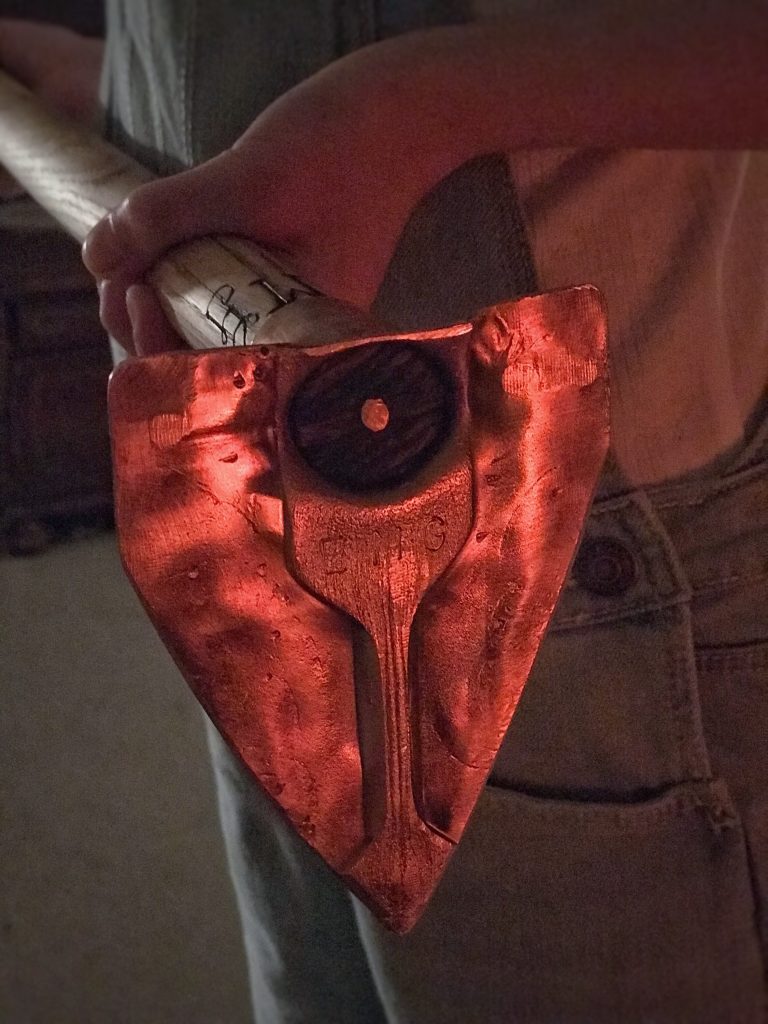
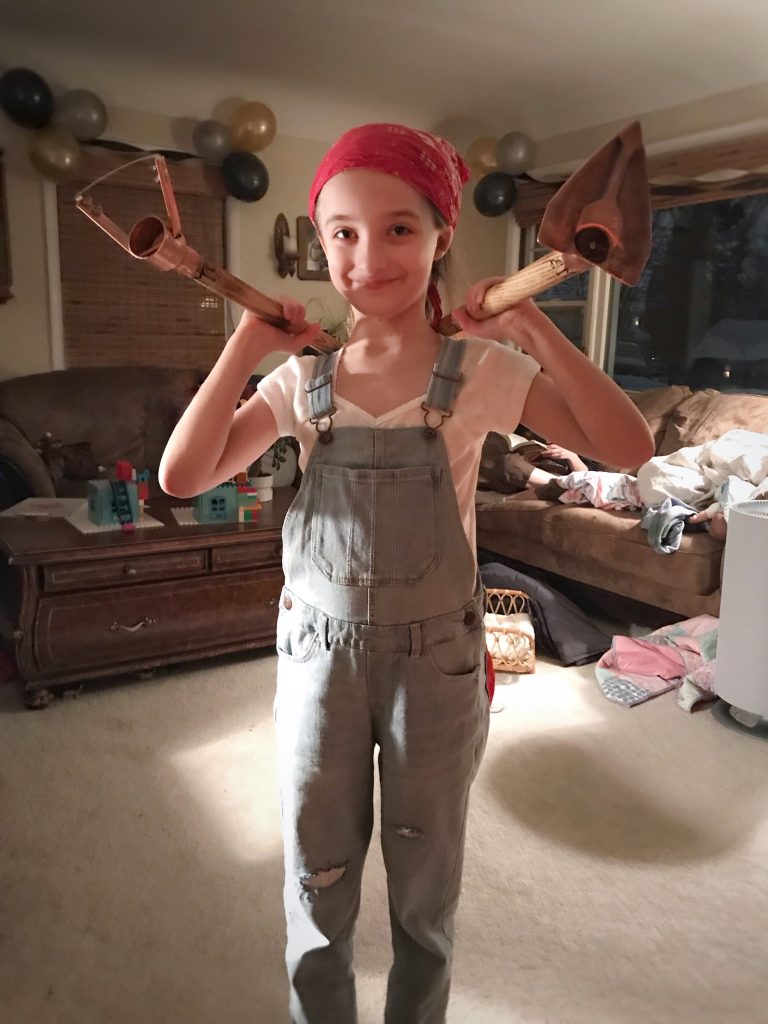


The Bears need copper tools to make their gardens flourish. Many tools were forged out of that treasure trove of leftovers, and we’ve had to buy most of this year’s supply to keep up with demand.
The first trowel had to go to Topher as a tribute to the legend for the inspiration, of course. Unfortunately, the prices of components prohibit keeping costs as low as we’ve wanted. We still keep it near cost for our Bear families, and thanks to them and the grace of God, we’ve grown in skill and productivity.


Now my hobby pays for itself, and a bit left over for the bee’s new boxes and some fresh paint this season.
Bee Alchemy helped me turn copper into liquid gold…
It was great meeting so many of you at the Festival!
God bless.
-

 Just Crushing2 weeks ago
Just Crushing2 weeks agoChristopher Gardner Completes First Dome Framing Project in Missouri: Exclusive Interview
-

 Just Crushing2 months ago
Just Crushing2 months agoBeartaria Ozark Campground Launches Community Forum!
-

 Just Crushing2 months ago
Just Crushing2 months agoMap it! – Discover Beartarians Living, Working, and Crushing Near You!
-

 Just Crushing2 months ago
Just Crushing2 months agoWhy Do We Feel So Free?
-

 Lifestyle2 months ago
Lifestyle2 months agoReconnect and Rejoice: Beartaria Times Weekly Challenge
-

 Reports2 months ago
Reports2 months agoReport: EF-1 Tornado Touches Down In The Ozarks
-

 Business2 months ago
Business2 months ago3000 Members In Our Business Group!: This Week On Our Community App!
-

 Wellness2 months ago
Wellness2 months agoBeartaria Times Member Shares History and Benefits of Haymaker’s Punch

